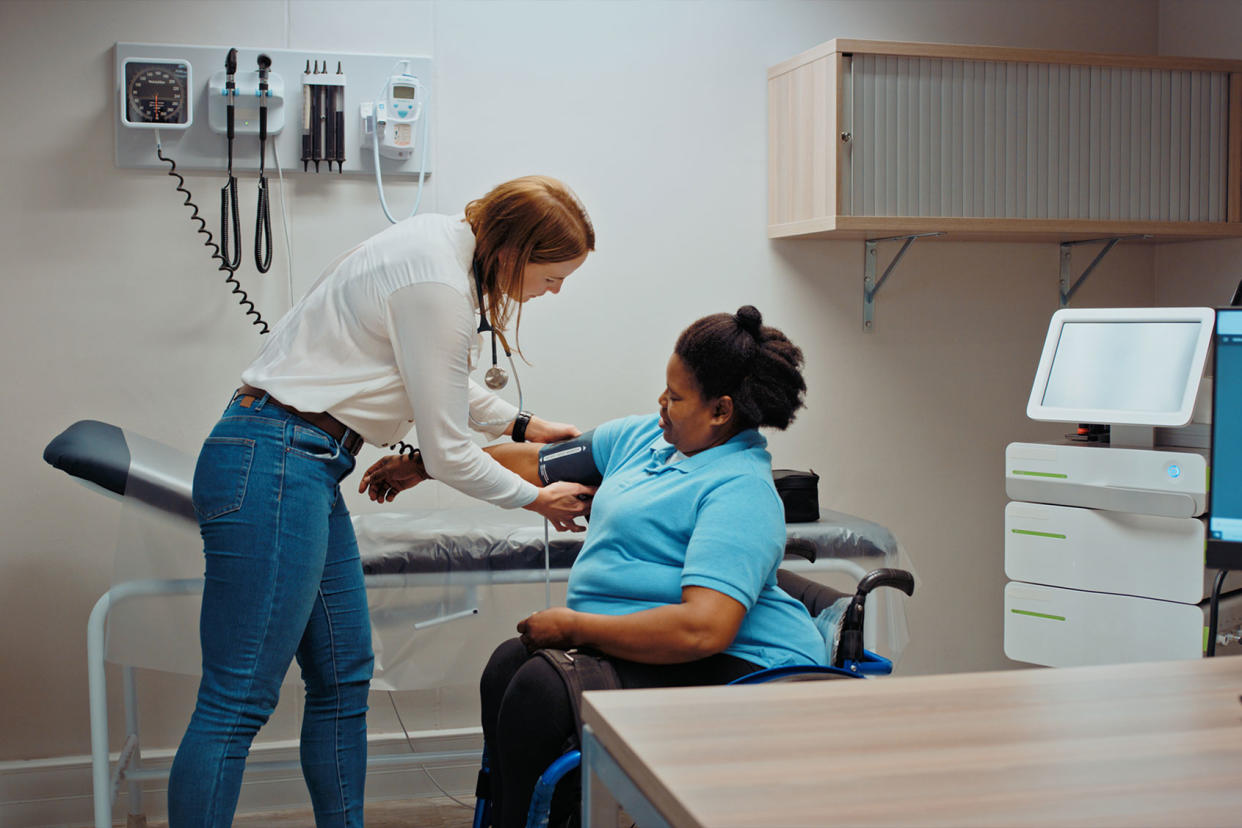How does diabetes start? A new study suggests it begins in the gut

Diabetes has been a well-known condition since ancient times, described 1500 years before Christ was born, in the Egyptian medical text the Ebers papyrus. Modern doctors thought they knew how it manifested: when the pancreas struggles to process insulin and therefore your blood glucose (or blood sugar) becomes too high.
But over the last several years, scientists have started looking at the gut microbiome — the menagerie of bacteria, fungi, viruses and other microbes that live in our bowels and impact our health — for a clues in the way diabetes develops. A recent study in the journal Nature Medicine reports that diabetes could be due to changes in the microbiome and the changes a body goes through when it develops the condition may even start there.
As diabetes rates continue to rise in the United States, the medical field continues to seek effective treatments for the debilitating disease. Patients with type 2 diabetes, for example, experience symptoms such as fatigue, thirst, frequent urination, tingling sensations and regular infections. If left untreated, patients with type 2 diabetes can suffer from kidney damage, eye damage, heart attacks and strokes.
For decades, doctors have treated conditions like type 2 diabetes with medicines like metformin and SGLT2 inhibitors or through insulin injections.
What this surprising new research suggests is that treatment for diabetes could extend beyond the blood or pancreas, instead focusing onthe microorganisms which reside in our guts.
"Although our study is mainly hypothesis-generating and cannot be seen as direct evidence for causal inference, our detailed analysis (including many sensitivity analyses) supports that our findings of microbial features of diabetes are unlikely due to reverse causality — that is, the pathological changes of diabetes cause microbial changes," Dr. Daniel (Dong) Wang told Salon.
The study he co-authored includes the largest and most diverse analysis of gut microbiomes ever created for people with type 2 diabetes (T2D), prediabetes and healthy glucose status. In the process, the researchers from Brigham and Women’s Hospital, the Broad Institute of MIT and Harvard, and Harvard T.H. Chan School of Public Health discovered both specific viruses and genetic variants in specific bacteria which correspond to T2D risk.
"Therefore, we are confident that the observed changes in the gut microbiome happen first and that diabetes develops later, not the other way around," Wang said. "However, future prospective or interventional studies are needed to prove causation firmly."
That said, there are some things which the researchers determined for sure. First, there are 19 phylogenetically diverse species of microorganisms that live in human guts which are associated with T2D, including enriched Clostridium bolteae and depleted Butyrivibrio crossotus. Additionally, "our study identifies within-species phylogenetic diversity for strains of 27 species that explain inter-individual differences in T2D risk, such as Eubacterium rectale," the authors explain.
Perhaps the paper's most important contribution to understanding T2D is that it firmly establishes that different species of microbes are linked to with varying levels of diabetes risk. Even though scientists have yet to establish exactly why these microbes are associated with diabetes, simply knowing for sure that this is the case is an important first step. Think of it as a sort of police lineup: it'll be easier to determine what causes diabetes in the future if we know what the potential "criminals" look like.
Want more health and science stories in your inbox? Subscribe to Salon's weekly newsletter Lab Notes.
"Different microbial strains, even within the same microbial species, are associated with different diabetes risks," Wang said. "The differences in the association can be explained by different genetic makeups and, therefore, functions of the strains."
When medical researchers apply the findings from the latest study, Wang believes they can use microbial features as biomarkers in order to help patients predict their risk for developing diabetes. That is only the beginning.
"If future mechanistic studies can confirm specific microbial strains are causally related to diabetes risk, we could develop intervention measures, such as dietary supplements or pharmacological approaches that target the specific microbial strains to prevent and treat diabetes," Wang said.
The last few years have seen an explosion of research into humans' gut microbiomes. Scientists have learned about the gut-brain axis, in which the gut biome helps control our cravings and may also be linked to neurological diseases. Technologies like fecal transplants are being considered to treat conditions like ulcerative colitis and yes, diabetes. In addition to helping us fight diseases and decide what we eat, gut microbiota are also believed to play an essential role in helping humans digest food that their digestive tracts cannot process on their own.
"Evidence suggests that gut microbes and their human host share much of the same metabolic machinery, with bacteria influencing which dietary components and how much energy their human host is able to extract from its diet," the Institute of Medicine (US) Food Forum said in 2013. "What we eat and drink, in turn, influences the microbiome, with significant implications for disease risk. This growing understanding of the role of diet in microbiome-human interactions is driving interest and investment in probiotic and prebiotic food products as a means to help build and maintain health."
In this respect, Wang suggests that the new Nature Medicine study may truly pioneer new ways of understanding humans' gut microbes.
"It offers the most comprehensive evidence to date of the gut microbiome’s involvement in the pathogenesis of T2D from the population study perspective," Wang said. "These results lay the groundwork for future mechanistic studies. Additionally, we provide a more nuanced understanding of the biology and pathogenicity of microorganisms by studying the genetic makeup and characteristics of microbial strains, bringing us one step closer to causality. Our findings provide evidence for the gut microbiome’s potential functional role in the pathogenesis of T2D, and highlight the identification of taxonomic and functional biomarkers for future diagnostic applications."


